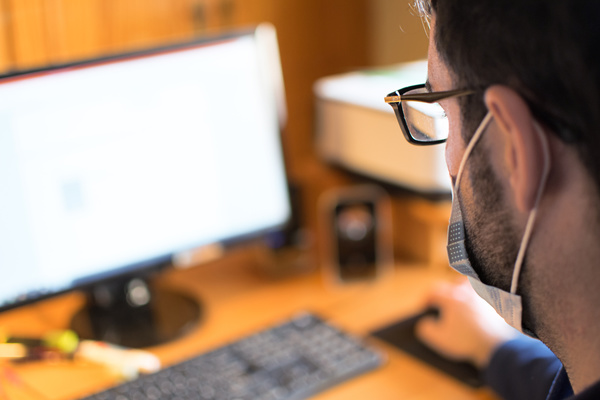In a world that’s interconnecting heavily and collecting data constantly, consumers use online tools to protect their health and safety from their medical problems. Equally, they find support for their ailments and discover new solutions. They need to balance and ensure accuracy in the data from crowdsourcing platforms, a popular way to share and collaborate on solutions to important problems. So health professionals must participate in these crowds and help guide them.
Health in an Interconnected World
In science, there are two branches:
- Pure science is the abstract research we do to better understand, and refine. And in some cases, discard and rewrite the theories that underpin how we believe the world works.
- Applied science is using the results of pure science to address the real world.
In medicine, the tension between theory and application is particularly intense. Everyone’s body is different, and treatments and symptoms can vary between patients.
Patients are using social media networks, podcasts, and other tools to crowdsource data and educate themselves. They’re finding others experiencing their issues, reporting rare symptoms, and offering new perspectives on medicine. As this unfolds, advantages and disadvantages have emerged that health and safety professionals need to be aware of and examine.
Drawing Information from the Crowd
Social media are the biggest crowdsourcing platforms. This has taken on several forms, including open discussions of hospitals to doctors becoming Instagram celebrities like dermatologist Dr. Sandra Lee helping to spread the word about rare skin conditions and how they can be treated.
For the healthcare industry, this can offer invaluable feedback on performance that isn’t available elsewhere. Up to 80% of patients won’t communicate with their doctors about important topics. Carefully monitoring these boards can help alert healthcare professionals to possible concerns. Similarly, this has led to better-informed patients who can search for their conditions online and get more information before they come in.
Broader datasets can also help with public health. Twitter has helped medical teams track outbreaks by analyzing tweets for specific hashtags and terms. It can even help groups crowdsource exposure when other entities won’t step in. Fans of the band Phish. For example, began tweeting COVID-19 test results and their specific seat at a series of shows that saw an outbreak of the virus.
Even memes can turn out to save lives. A member of the popular site Reddit posted a meme as a joke where he used an ex-girlfriend’s pregnancy test and it came back positive. After several people told him to see a doctor immediately, he did so and found early-stage testicular cancer. It turns out that several types of tumors also generate the hormone that the test looks for.
The anonymity of the internet also helps patients discuss sensitive health issues. Topics people struggle to bring up with their doctors (like erectile dysfunction, menopause, or mental health concerns) can be easier to discuss online or find support for.
However, there are concerns as well.
Is the Patient Always Right?
All this data is subjective. One analysis of patient feedback on social media, when compared to objective measures of hospital quality, found the two rarely aligned, and hospitals poorly rated under government metrics enjoyed higher opinions than they deserved.
Another problem is the spread of misinformation. One example is the belief among some that they have an undiagnosed skin disorder called “Morgellons,” where a parasite causes skin rashes with fibers found in the sores.
Despite a years-long investigation by the CDC and repeated studies conducted by medical authorities, no sign that this disease even exists has been found. It’s generally held to be a form of delusional parasitosis—the belief that one is infested with parasites contrary to the evidence. Many remain convinced they have it.
A more subtle problem is data overload. With the proliferation of health-tracking tools, connected medical devices, and other sources of data, patients can fall down a rabbit hole of obsessing over numbers that mean less than they think.
So, how can anyone subtract the good from the bad?
Getting the Best from the Crowd
- Establish crowdsourcing platforms and social media standards for everyone in your organization. Offer examples of what should be discussed and crowdsourced, and offer guidance as to why. These should be driven by both medical ethics and common sense.
- Monitor professional standards as they develop. Medical ethics and professional conduct boards are overwhelmed by the tidal wave of technology like any other industry who are constantly shifting its views on what is considered ethical.
- Understand how platforms work as both somebody reading and somebody posting. What draws a crowd and what doesn’t? What do crowds most need to know? What engages them? Dr. Lee is a case in point. Many come for the gross-out concept but walk away learning something about their skin. They may even seek the treatment they otherwise wouldn’t have.
- Focus on informative, useful, and shareable content that crowds can work with to offer feedback. Ask and answer questions, send out surveys and polls, and bring patients and their families into the crowd.
- Ask patients where they’re going online, where they’re getting information, and why they’ve sought certain data. Seek out these resources and see what they say. Find support groups for chronic conditions and other concerns that are run by professionals or have a solid structure you respect.
- Create your own crowdsourcing community using innovation or crowdsourcing platforms like IdeaScale. This is ideal for patients and their advocates to offer ideas, approaches, and feedback, both anonymously and using their names. This will give you more oversight of how things unfold. Have instructional tools and materials available for patients that aren’t familiar with the internet or that may need someone’s help to access the platform.
Crowdsourcing is part of the medical world, and everyone in healthcare should learn how to manage it. To learn more, request a demo!
Most Recent Posts
Explore the latest innovation insights and trends with our recent blog posts.
















